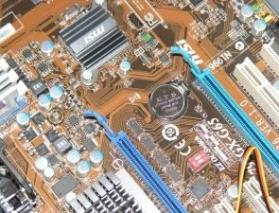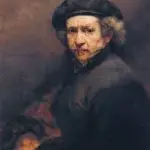 Ancient Greek and Roman mythology portrayed the Olympic deities as super-human animals. They mostly looked just like us. Their bodies were like our bodies: they had stuff like blood in their veins; they ate ambrosia and drank nectar. They could be injured by each other and by humans. Athena knocks out Ares by hitting him in the head with a rock. And of course they had sex with each other and gave birth to offspring. They even had sex with humans. Strikingly, when humans and the deities had sex, their affairs produced fertile offspring. Humans and the deities were very very similar.
Ancient Greek and Roman mythology portrayed the Olympic deities as super-human animals. They mostly looked just like us. Their bodies were like our bodies: they had stuff like blood in their veins; they ate ambrosia and drank nectar. They could be injured by each other and by humans. Athena knocks out Ares by hitting him in the head with a rock. And of course they had sex with each other and gave birth to offspring. They even had sex with humans. Strikingly, when humans and the deities had sex, their affairs produced fertile offspring. Humans and the deities were very very similar.
Over time, this picture of the deities changed. The Greek and Roman philosophers typically rejected the poetic picture of human-like deities on Mount Olympus or in the sea. The deities turned into the deep powers of nature. The Stoics argued that all of nature was animated by a single ultimate power they called pneuma. Pneumais the Greek word for breath; it became the Latin word spiritus Much later, it turned into the English word spirit. The Stoic pneuma was a kind of fire-energy. The Roman writer Cicero presented the Stoic theology in his book On the Nature of the Gods. He wrote that there was a single fire-energy animating all of nature. But this fire-energy became specialized as the different parts of nature became distinct. You could use the term “Zeus” to refer to the fire-energy itself. But the term “Poseidon” refers to the energy as it appears in the sea while “Ceres” refers to the energy in the earth (ONG, 2.63-71). So as nature became divided into distinct parts, the divine energy became divided into specialized divine energies. These were the specific gods and goddesses.
The conception of the deities as specialized energies was further developed by the Roman Neoplatonic philosophers. They also rejected the picture of the gods and goddesses as human-like animals. The Roman thinker Iamblichus started, like the Stoics, with a single divine energy: “the energy of divine fire shines forth voluntarily, and in common, and being self-invoked and self-energetic, energizes through all things with invariable sameness, both through the natures which impart, and those that are able to receive, its light” (On the Mysteries, 4.3). But this energy becomes specialized as it shines out through the different parts of nature. The specific gods and goddesses are just specialized kinds of divine energy. The Neoplatonic writer Sallustius affirmed this theory of the deities in his On the Gods and the World. From Neoplatonism, the concept of divine or spiritual energy enters the Western occult or esoteric traditions. It reappears in the New Thought movement in America in the late 1800s and early 1900s. From the New Thought movement, it spreads out into the New Age and Neopagan movements. For instance, Gerald Gardner, who founded Wicca, explicitly cites Sallustius’s On the Gods and the World to develop his theory of the Wiccan deities.
Unfortunately, the concept of energy is greatly abused in much New Age and Neopagan writing. It turns into pseudo-science. Spiritual energy turns into a kind of non-physical energy that you can manipulate with your mind. You can arouse it and shape it through magical rituals. Or you can somehow charge crystals with spiritual energy. Pseudo-scientific practices like Reiki manipulate spiritual energy. It turns into the qi that flows through meridians or into the prana that animates your chakras. And history is littered with bogus energy concepts. Bogus energy concepts include the orgone energy of Wilhelm Reich, the radial energy of Teilhard de Chardin, the elan vital of Bergson, and many other unscientific energy concepts.
Spiritual naturalists won’t accept any of this pseudo-science. But the fact that people abuse a concept doesn’t invalidate its legitimate uses. Energy really does exist. It’s just physical energy, studied by the natural sciences. You can measure it. It flows through all things in the universe, from stars to human bodies. You can manipulate it with your mind, in exactly the sense that your mind is your brain, and your brain has some control over its own flows of entirely physical energy. When the concept of energy is used in natural ways, it may help spiritual naturalists to develop their own practices. There is no reason for spiritual naturalists to fear words like energy or spirit.
Our universe began with an enormous explosion of energy, that is, with the big bang. At the time of the big bang, this energy acted as a single force. After the big bang, this energy split up, through a process of symmetry-breaking, into the four fundamental forces of nature: gravity, the strong nuclear force, the weak nuclear force, and electromagnetism. If you wanted to very closely follow Cicero, Iamblichus, and Sallustius, you might identify the primordial force with some primary deity, and then identify the four derivative forces with four secondary deities. Of course, these deities are not persons to be worshipped. But those ancient Greek and Roman philosophers rejected that conception of deities. The deities were deep natural powers. But it’s hard to know how you would incorporate these force-deities into spiritual practice.
Besides the four fundamental forces, nature is animated by many other powers. I’ll skip over the physics (which you can easily learn about via Google). Atoms are pulled together by quantum mechanical forces to make molecules. These forces make covalent bonds. The van der Waals force binds molecules together. And entropic forces drive molecular systems to self-organize. If you want to learn more about how entropic forces drive the self-organization of matter, look into the maximum entropy production principle and related ideas. Look at the work of scientists like Rod Swenson and Jeremy England. It’s fascinating science. For our purposes, all that matters is that complex physical systems, like our bodies, are animated by all sorts of derivative forces. Again, if you wanted to very closely follow the ancient writers, you might refer to the chemical and biological forces that animate your body as energy-deities.
When it comes to energies, the concept of spirits works better than the concept of deities. Deities still look too much like people. So you might think of matter as generally energized by spirit but specifically energized by specific spirits. Here spirit refers to energy organized by material structure. A spirit is a piece of matter thought of dynamically, thought of as a structured pattern of lawful changes. Every molecule in your body, thought of as a dynamical system, is a little molecular spirit. Every gene is a genetic spirit. Every cell is a cellular spirit. Every organ is an organic spirit. All these visceral spirits jostle and dance in your flesh. They are not disembodied minds or immaterial ghosts. They are transformational powers. They are ways that physical change is constrained by formal patterns to move in specific ways. The concept of a spirit as an immaterial ghost really belongs to Christian mind-body dualism. The Stoics, and even the Neoplatonists, did not accept that dualism. Spirits are dynamical physical operators that map material structures onto material structures.
The spirits in your body can cooperate and they can compete. They can reinforce each other or fight against each other. Your genetic spirits form spiritual networks which structure the most basic dynamics of your flesh. Your flesh shimmers with their dances and their wars. Your genetic spirits are dynamical operators: they have jobs to do; they have molecular skills. If they don’t do their jobs well, they introduce conflict and disorder into your body. Various kinds of damage, ranging from genetic disorders to injuries, can drive your organs to fight with each other. You can develop auto-immune diseases, in which your immune system fights against other tissues in your body. Your body can turn into a spiritual battleground. When spirit is thought of in this entirely physical way, illness turns out to be spiritual disorder.
Medicines are molecules selected for their spiritual powers– their powers to restore spiritual balance and peace. And so, for example, taking anti-depressants can be a spiritual practice. This molecular sense of spirit is still preserved in the sense of alcoholic beverages as spirits. Alcohol is a spirit that works on your brain. Of course, in this molecular sense, not all spirits are benevolent. Some spirits are poisonous. And some spirits are extremely powerful, therefore extremely dangerous. Psychedelic drugs and drugs like MDMA are very powerful spirits. They can drastically reorganize the spiritual ecology of your nervous system. Used outside of ethically well-regulated contexts, those spirits can be very destructive. Perhaps spiritual naturalists need to figure out ways to create contexts in which those spirits can be used legally and safely.
Spirit flows through all the molecules, cells, and organs of your body. All of our organic drives are spiritual. Spiritual powers are the vital powers of living bodies. Thirst and hunger are spiritual drives that move your body like gravity moves matter. Lust is the spiritual power generated by many interacting organs: your genitals, your endocrine system, your immune system, your nervous system. Lust really is a spiritual energy. The ancient Greeks and Romans thought of it as a deity. Curiosity is also a spiritual power emerging from your brain. We feel the greatness of spiritual power as our bodies strive for excellence in cognitive or athletic activities. When we are aware of lust, hunger, or curiosity, we are aware of specialized spirits. But can we become aware of spirit itself? Perhaps there are ritual activities which arouse spirit so intensely in our bodies and brains that we become intensely aware of spirit itself.
Certain types of dancing seem to induce hyperarousal trances. During those trances, the dancers report being aware of an intensely spiritual energy flowing through all things. Robin Sylvan has done extensive studies of rave dancers, who report these experiences. His excellent book, Trance Formation: The Spiritual and Religious Dimensions of Global Rave Culture, discusses these issues in detail. Spiritual practice is often portrayed as sitting quietly without moving. Perhaps instead enlightenment is dance.
Learn about Membership in the Spiritual Naturalist Society
__________
The Spiritual Naturalist Society works to spread awareness of spiritual naturalism as a way of life, develop its thought and practice, and help bring together like-minded practitioners in fellowship.












